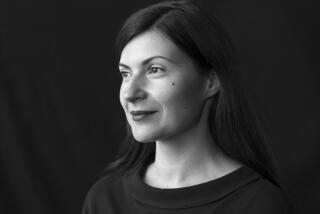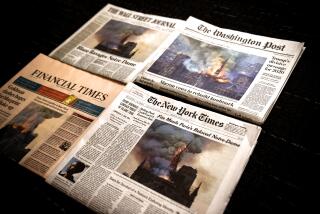The Rat by Gunter Grass; translated by Ralph Manheim (Harcourt Brace Jovanovich: $17.95; 371 pp.)
Rats take over the world in the posthuman era after Doomsday, in this tragicomic, dizzyingly inventive novel that’s as intricate as the inner workings of a baroque clock.
The protagonist is a man who asks for, and receives, a Christmas rat under the tree as a present. “She plays with my fears, she can feel them. So I talk in self-defense.” Soon, the She-rat emerges in his imagination and dreams. She tells him about the historical experiences of rats. For example, Noah “crossed us off his list” when he invited creatures into the ark, but rats survived the Flood in underground passages they had plugged. Earlier, rats gnawed holes in thick shells protecting gigantic dinosaur eggs. “Poor dinosaurs! sneered the She-rat, showing her incisors that never stopped growing.”
Plots and sub-plots bump into each other. We encounter a group of feminists on a research ship in the Baltic Sea, in search of “Utopia Atlantic Vineta,” a mythical island sunk off Usedom where women once reigned. And, we meet Oscar Matzerath, the “tin drummer” of Gunter Grass’ famed earlier novel, who is now a senior citizen heading a video corporation that hucksters the claim, “We are creating the future.” The book’s pages become layers of onion skins. We shortly meet Matzerath’s grandmother, Anna Koljaiczek, at her 107th birthday party. As a surprise gift, Matzerath shows a video fantasy featuring characters from the Brothers Grimm and Hansel and Gretel. The Frog King and Rumpelstiltskin cavort with the Brothers Grimm, who are celebrity politicians in Bonn dedicated to saving Germany’s imperiled forests. Yet another figure in the book is the painter Malskat, an honest man who forged cathedral art works.
But back to the rats. “The often thoughtlessly parroted human saying--The rats abandon the sinking ship--was no accident,” says the She-rat. “But when the earth became the ship there was no other planet to move to. So we looked underneath the human bunker system.” However, once humans were gone, rats began to miss them. “Not only did we miss the provisions and garbage,” but ideas as well. Yet rats could see the sharp differences between themselves and humans: “Never infatuated with ourselves. No need of mirrors. We never found profundity in hot air; no goal outside ourselves tempted us, magnified us, exalted us; there has never been a superrat.”
What baffled rats was the humans’ total extinction. The rats were blamed, as always, for playing a role in it. “Again the She-rat laughed in her own way--but then stored-up bitterness restored her gravity. The rats and the Jews, the Jews and the rats are to blame.”
After Doomsday, rats mourned humans. “Ah, we said to ourselves right after the Big Bang, if only we could keep them with us, just a few specimens at least . . . What would be left of us without man’s dread that there might be a rat somewhere, possibly baring his teeth in the toilet bowl?” Yet the posthuman era seemed to be good for rats: “We’re gaining in every respect. Free at last from humans, the earth is reviving, filling again with creatures that creep and fly. The seas are breathing again. The air seems rejuvenated.”
But troubles await rats. “We’re getting religion. No sooner has the human race perished than we start looking behind things, searching for meaning, fashioning images.” Shortly, deviations appear in creeds and trends; rats seem “doomed to walk in the footsteps of man.” There are crucifixions on Bishop’s Mountain. At “the rat mass in Saint Mary’s” the She-rat detects “a pagan undercurrent.”
To the horror of rats, “rat-men--or hominoid rats” appear. They “embody power.” The rats “can’t regard this ghastly, ridiculous hybrid” as their counterpart; “it offends against the image of man that we still bear intact within us.” The rats destroy the hominoids. “By saying yes to the rat component in us, we are becoming truly human. And because we are aware of our human component, the rat component has become essential to us.”
“The Rat” is a brilliant, probing masterwork. It evokes ghosts of the past (“yesterday’s screams are long heard . . . the smell of corpses cannot be hidden”), and it causes us to focus on an apocalyptic vision of the present and the future. Grass has to be the world’s most fanciful visionary. What a storyteller!
More to Read
Sign up for our Book Club newsletter
Get the latest news, events and more from the Los Angeles Times Book Club, and help us get L.A. reading and talking.
You may occasionally receive promotional content from the Los Angeles Times.






